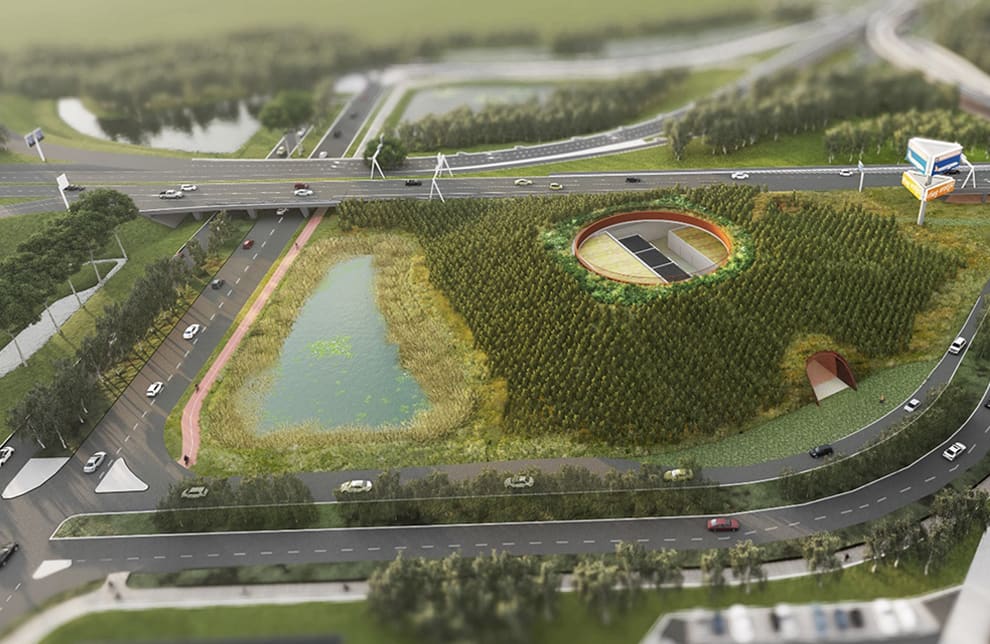Smart designs: Getting creative with concrete
Our designers are getting more and more creative in the ways they save concrete. And that’s much needed. Did you know that 8% of global CO2 emissions come from concrete? That’s why we are using less and less of it on and around the taxiways and aprons where the planes are parked. How we do that? More tailor-made solutions and more reuse. Here are a few examples.

Smart designs
The concrete surface of the apron becomes worn out over time due to aircraft taxiing in and out. It therefore needs to be renewed periodically. The method of calculating the amount of concrete that is needed for these renewals recently became more precise. The pressure exerted by a plane’s nose wheel is less than by its landing gear. This means that a thinner concrete surface is required under the nose wheel. As a result, less concrete is used and fewer CO2 emissions are produced.
Paving stones
On a few aprons, paving stones have been laid as pavement instead of concrete. The Environmental Cost Indicator (all relevant environmental impacts) of paving stones is 50% better than concrete, making them a sustainable solution. So why don’t we lay these stones on all aprons? It’s all to do with safety – they can only be used at locations where planes are towed by a pushback truck (so without the engines being switched on).
Cutting corners
The Kaagbaan, a frequently used runway, has several exits towards the taxiways where aircraft taxi from the runway to the terminal after landing. Until recently, every exit had the same dimensions. However, the speed of landing aircraft was taken into account when constructing a new exit ramp at the Kaagbaan Runway. Because speeds here are low, an exit ramp will be constructed with a smaller curve than at other locations. Again, this saves concrete and asphalt.
Reusable checkpoint
At Schiphol, anyone going from the public area to the restricted area where aircraft are parked must pass through a checkpoint. Here, security checks are carried out on all individuals and goods. During the expansion of one of our cargo aprons, a mobile security checkpoint was installed for the first time. The advantage of this is that it goes into storage after a construction project has been completed and can then be reused for the following project. This way, we use less construction material, including concrete.
Schiphol aims to be a zero-emission and zero-waste airport in 2030. All of these initiatives contribute to that ambition. Read all the measures we are taking to make Schiphol more sustainable →
Read the previous blogs
-
Special high-voltage substation
Published on:New high-voltage substation contributes to one of Schiphol’s most significant sustainability goals: zero emissions in 2030.

-
More electric equipment
Published on:Most diesel generators have now been replaced by electric ones. Schiphol provides almost all planes parked at the gate with electrical power.

-
Start construction circular checkpoint
Published on:For the new checkpoint we are using material left over after the demolition of three office buildings and three cargo buildings at Schiphol.
